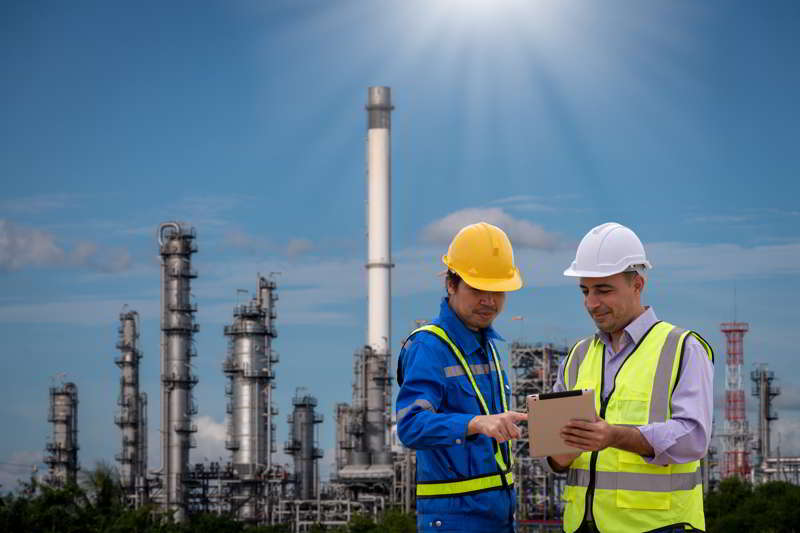Best Practices to Ensure Safety in the Oil and Gas Industry
Safety is vital in the oil and gas sector due to the numerous potential hazards in the processes involved when handling these valuable resources. Companies must ensure best practices during extraction, production, and transportation to minimise risks, protect workers, and maintain operational efficiency. Our experts at Armadex discuss the guidelines to observe for a safer work environment.

Comprehensive safety training
Employers must ensure their workforce is well-trained; this is the foundation of safety in any industry. Comprehensive safety training should cover the correct use of personal protective equipment (PPE), emergency response, safe work procedures, hazard recognition, respiratory protection, hearing conservation, and overhead crane safety.
Process safety management (PSM)
As an Occupational Safety and Health Administration (OSHA) standard, a PSM system enables you to identify, assess, and manage hazards when handling dangerous chemicals and related processes. A robust system incorporates continuous risk assessment, development and maintenance of safety procedures, and appropriate equipment design and regular maintenance.
Regular inspections and equipment maintenance
Conduct regular facility inspections to identify and address potential safety hazards in time. Regular inspections entail checking for mechanical integrity issues, corrosion, and leaks that could lead to incidents.
In the age of artificial intelligence (AI) and machine learning (ML), predictive maintenance technology is crucial, as it reduces the time spent on maintenance planning by up to 50%, reducing unplanned downtime and related losses.
Emergency response planning
A comprehensive emergency response plan outlines the procedures everyone should take during various emergencies, including spills, fires, and explosions. Properly train employees in these procedures and conduct drills frequently to evaluate their effectiveness.
Personal protective equipment (PPE)
Workers must wear PPE to protect themselves against the hazards often encountered in the oil and gas work environment.
Some of the PPE for standard use and where chemical spills or splashes may occur include the following:
- Hard hats
- Industrial boots
- Safety goggles
- Flame-resistant clothing (FRC)
- Hearing protection
- Chemical-resistant face shields
- Whole bodysuits
Confined and dangerous space safety
Many hazards in the industry occur due to confined and dangerous spaces. Implement strict procedures, such as atmospheric monitoring, proper ventilation, and rescue plans.
An explosion-proof Atex camera is essential in potentially explosive settings because they effectively monitor dangerous places remotely, eliminating the need for workers to go into those areas physically.
Fall protection
Falls from heights lead to numerous fatalities in the oil and gas work environment. According to a CDC survey, fall protection equipment was required by 86% of the workers involved in fatal fall accidents. Therefore, provide adequate measures against such events by installing lifelines, safety harnesses, and guardrails in the workplace.
Continuous improvement
It’s imperative to promote a culture of continuous improvement to identify areas that need updates. You can achieve this by regularly reviewing training programs, safety policies, and work procedures. For success in this endeavour, open communication and employee feedback are essential.
A final word
Safety is paramount in the oil and gas industry because it protects the workers while boosting environmental responsibility and operational efficiency. Create a safer environment by regularly implementing and reviewing these practices to enhance effectiveness. Contact Armadex to learn more about the significance of promoting safety and other relevant guidelines in the sector.


